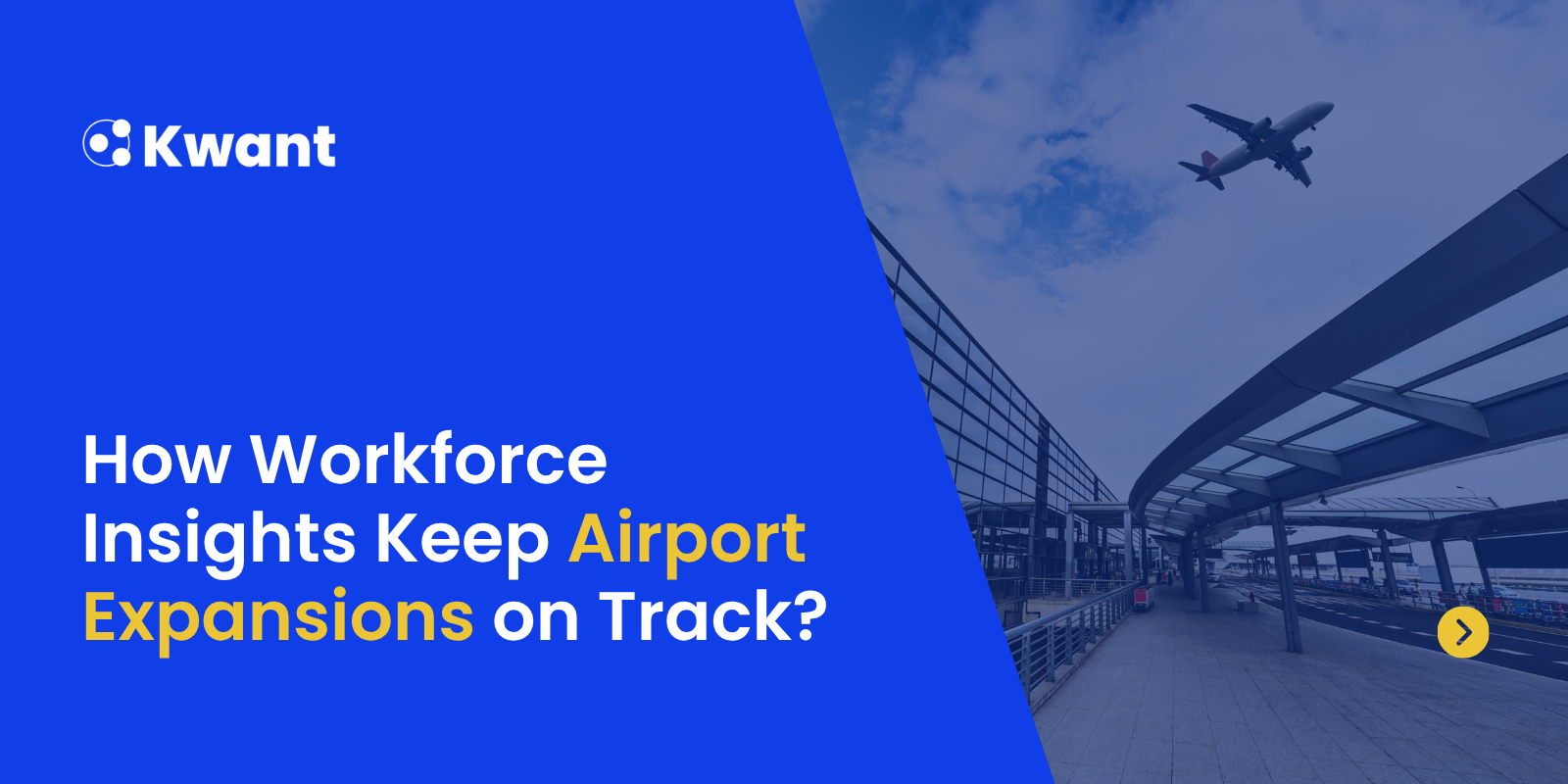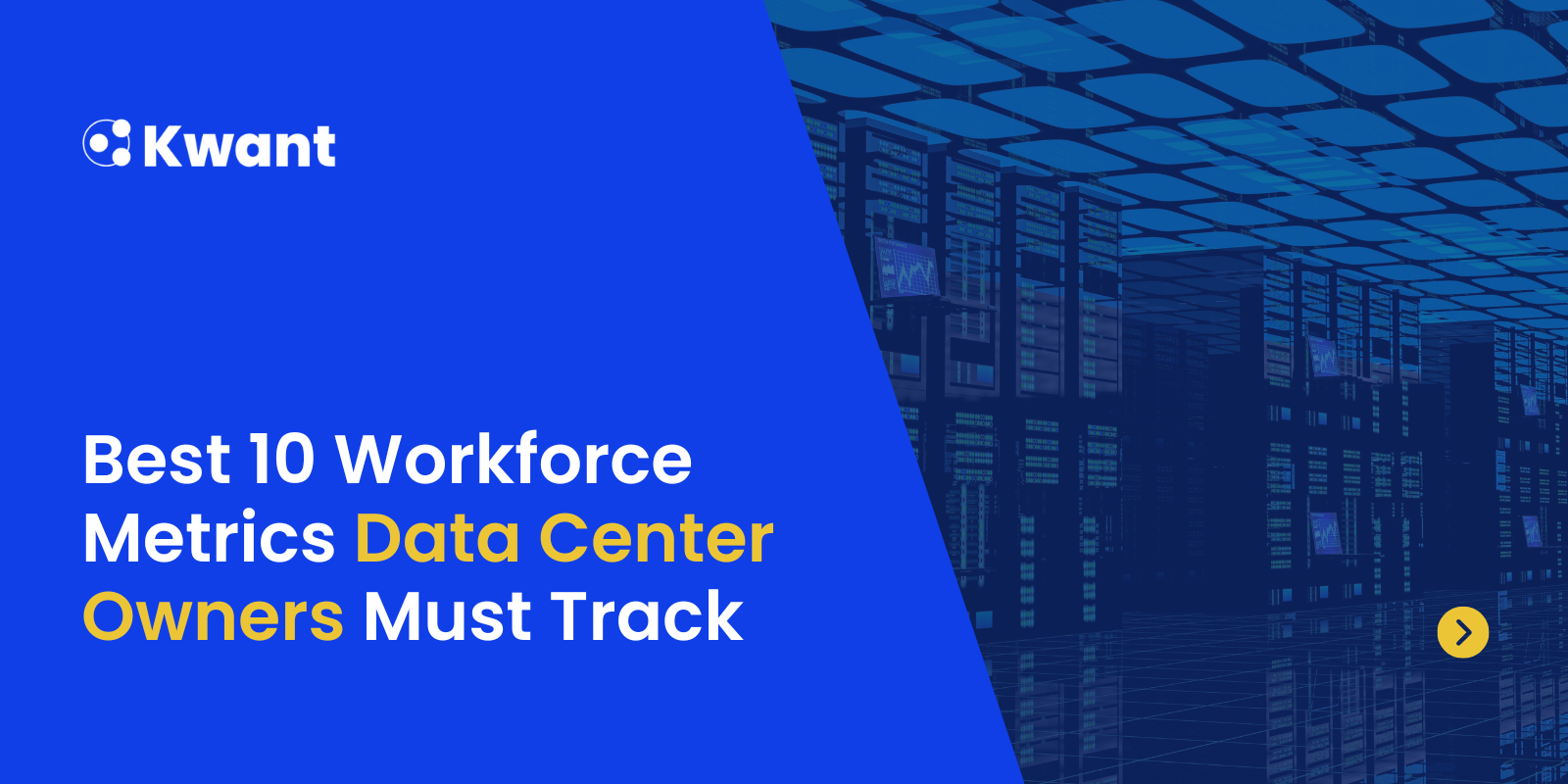Expanding an airport isn’t just another construction project, it's one of the most complex operations in modern infrastructure. Between live flight schedules, tight security zones, and nonstop passenger movement, every decision needs precision.
And in this high-stakes environment, one factor determines whether a project runs smoothly or falls behind: effective workforce management supported by real-time insights.
Let’s break down why workforce analytics have become indispensable to modern airport construction management, how they’re reshaping project delivery, and what we can learn from real-world examples like the RSW Terminal E Expansion.
The Challenge of Managing Airport Construction Projects
Airport construction comes with layers of complexity most other projects never face.
Crews often work in active terminals or runways where safety regulations are non-negotiable. Every task from excavation to installation must be timed precisely around flight operations, security checks, and passenger access.
Here’s what project managers are up against:
- Active work zones: Construction teams operate alongside daily airport activities. Any mistake can disrupt flights or compromise safety.
- Massive coordination needs: Thousands of workers, multiple subcontractors, and suppliers need synchronized scheduling.
- Regulatory oversight: From FAA compliance to local safety codes, every process must meet strict standards.
- Tight timelines: Delays aren’t just expensive; they impact national air traffic capacity and public trust.
Without accurate, shared, and real-time workforce data, these factors can snowball into miscommunication, labor inefficiencies, and missed milestones.
This is where digital transformation steps in with workforce insights leading the charge.
Why Workforce Insights Are a Game-Changer in Airport Construction
Modern workforce insights in airport construction allow project leaders to understand what’s happening on-site in real time.
Instead of waiting for daily reports or guesswork, managers can now track:
- Who’s on-site
- Where each team is deployed
- What progress has been made
- Which areas are falling behind
These insights create complete visibility into operations. And visibility is power; it allows general contractors to spot productivity drops, safety issues, and scheduling conflicts before they affect the project timeline.
When integrated with digital construction project tracking systems, workforce insights help leaders:
- Detect early warning signs of delays
- Balance workloads across teams
- Align manpower with project priorities
- Maintain compliance across multiple subcontractors
In short, data turns reactive management into proactive decision-making, a critical advantage for projects where every minute counts.

The Power of Real-Time Workforce Data
Here’s the thing: traditional methods like manual reporting or spreadsheet tracking just don’t cut it anymore. They’re slow, error-prone, and lack context.
Real-time workforce data changes that entirely.
With connected job sites and digital dashboards, supervisors can now see live metrics on attendance, crew distribution, and progress across zones.
If one section of a terminal expansion suddenly faces a labor shortage, managers can instantly reallocate teams keeping the project on schedule.
This responsiveness improves more than just productivity. It enhances safety compliance, ensures consistent labor utilization, and reduces downtime caused by miscommunication.
Think of it as moving from “project monitoring” to project intelligence where the system itself tells you what’s working, what’s not, and what needs fixing.
Case Study: Supporting the RSW Terminal E Expansion Project
A perfect example of this transformation in action is the RSW Terminal E Expansion Project, an ambitious initiative to expand passenger capacity and modernize airport infrastructure.
This project brings together multiple trade partners, hundreds of daily workers, and a complex operating environment that demands both precision and coordination.
To handle this, the project team adopted workforce analytics and digital project insights powered by platforms like Kwant.
Here’s what that looks like in practice:
- Every worker’s presence and activity are tracked in real-time.
- Data from wearables and site check-ins feeds into a centralized dashboard.
- Supervisors monitor safety, productivity, and zone-level progress daily.
- Decision-makers use these insights to forecast staffing needs and manage labor efficiency across all trades.
With real-time visibility into field operations, the RSW Terminal E team can reassign labor instantly, adjust schedules, and prevent delays before they escalate.
This isn’t just about keeping workers accountable, it's about empowering leadership with the clarity to make informed, timely decisions.
The result? A smoother project flow, higher workforce productivity, and fewer disruptions to airport operations.
That’s what effective airport construction workforce management looks like in action.

How Workforce Insights Improve Airport Project Efficiency
Building airport project efficiency means balancing three things: safety, productivity, and quality. Each depends on having reliable data at your fingertips.
Let’s break it down:
- Safety: Workforce analytics help ensure compliance by tracking attendance, certifications, and safety training records automatically. This reduces risk exposure in high-security airport zones.
- Productivity: Real-time data highlights where teams are overstaffed or understaffed, allowing better resource allocation.
- Quality: By maintaining accurate labor records, teams can verify who completed each task essential for accountability and quality assurance.
The combined effect? Fewer reworks, better collaboration across trades, and smoother communication between the field and the office.
These aren’t just operational improvements, they're strategic advantages that protect both project timelines and profit margins.
A Smarter Way to Manage Large Infrastructure Projects
Large-scale projects like airport expansions depend on one thing: coordination. The challenge is that traditional systems often operate in silos scheduling tools here, HR systems there, site reports somewhere else.
Platforms like Kwant unify it all.
They integrate field data, labor analytics, and scheduling systems into a single dashboard that gives general contractors full visibility into performance and progress.
With automation and AI, project leaders can:
- Track workforce trends across all sites
- Anticipate delays before they occur
- Compare planned vs. actual labor deployment
- Prevent cost overruns with early alerts
This isn’t just convenient, it's transformative. It moves the focus from reacting to problems to predicting and preventing them.
In other words, workforce analytics don’t just show what’s happening today they help you plan for tomorrow.
The Future of Airport Expansion Projects
The next generation of airport expansion projects will be defined by two words: connectivity and intelligence.
As airports grow into smart, digital ecosystems, so must the construction methods behind them. Real-time data, AI-driven workforce analytics, and integrated tracking platforms will be the foundation for faster, safer, and more sustainable development.
Here’s what’s coming next:
- Predictive analytics: Forecast labor needs and safety risks before they happen.
- IoT-enabled sites: Connected devices tracking worker movements, equipment usage, and zone safety.
- AI-driven optimization: Automated workforce allocation based on productivity trends.
- Sustainability metrics: Data-driven tracking of emissions and environmental impact during expansion.
The future isn’t about more workers, it's about smarter, data-informed management that maximizes every hour and every resource.
Building Smarter Starts with Better Workforce Visibility
At the end of the day, every successful airport expansion from RSW to the next major terminal depends on one thing: people.
And the only way to manage people at this scale effectively is through data-driven workforce visibility.
When general contractors use real-time insights to align labor, safety, and schedules, they not only stay on track but deliver higher-quality outcomes for passengers, airport authorities, and the public.
Ready to Build Smarter?
If you’re managing an airport expansion or any large-scale infrastructure project, it’s time to move beyond manual tracking and guesswork.
Real-time workforce insights can help you reduce risk, improve productivity, and ensure your projects finish on time and within budget.
Connect with the Kwant team to see how data-driven workforce analytics can transform your airport construction management strategy from planning to final handover.
.svg)










%20(1).svg)














